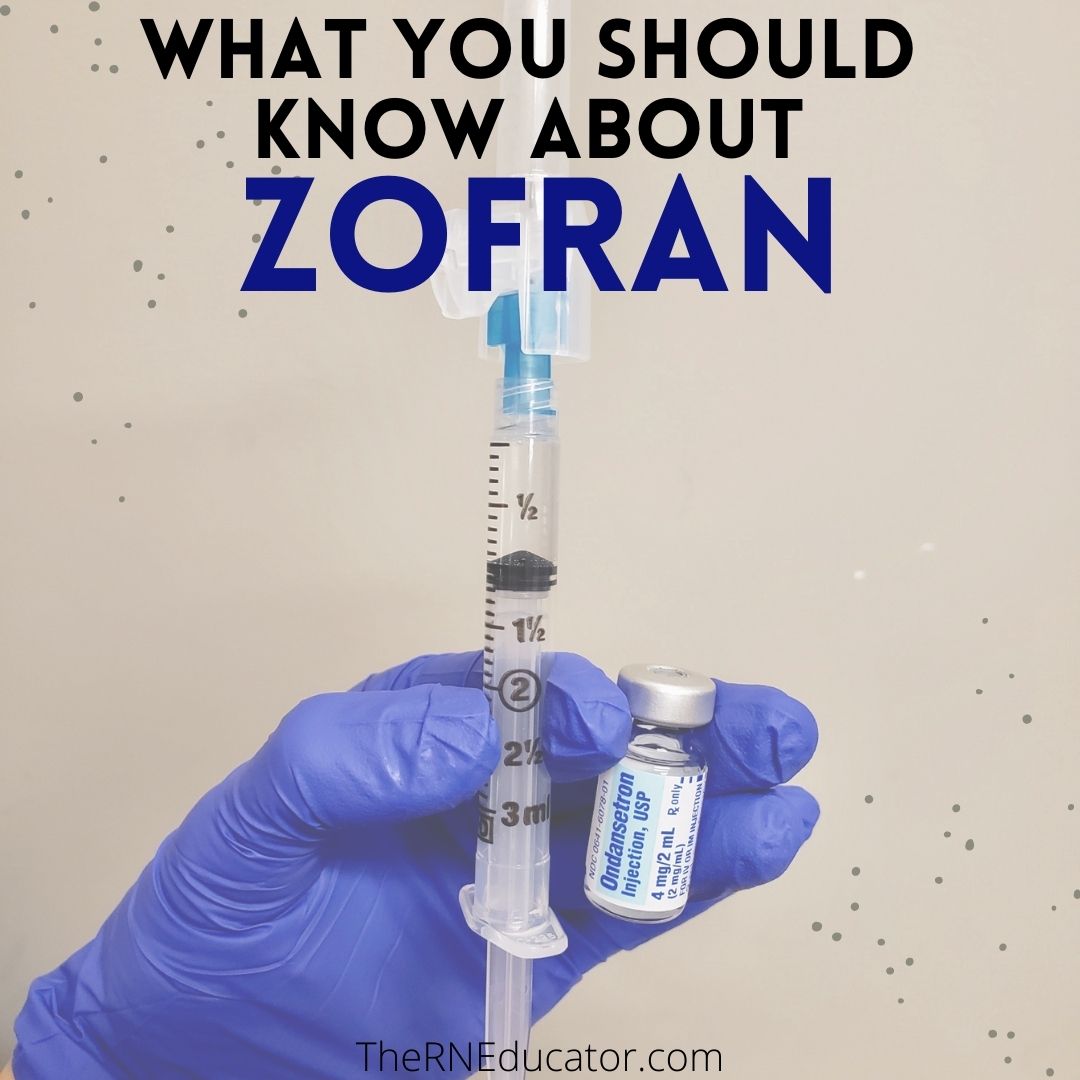What You Should Know About Zofran

Hi friends and Happy “Medication Monday”! Welcome back to our learning space. Today we are talking a medication that can seem magical for some…(at least that’s what it feels like when you are feeling nauseous and can’t stop vomiting, ha ha). Meet Ondansetron (Zofran)! Zofran is an anti-emetic that is used to treat nausea and vomiting. Pretty much the go-to drug to pediatric patients when they are experiencing these symptoms. Let’s break it down below…
Dosage Forms
Zofran comes in various dosages and various forms
- IV/IM solution: 2mg/mL
- Tablet: 4mg, 8mg
- Oral Disintegrating Table (ODT): 4mg, 8mg
- PO solution: 4mg/5mL
Question:
What form of Zofran will you give a patient who is actively vomiting and why?
When is it used?
As I said earlier, Zofran is used for nausea and vomiting but there are specific situations when this drug is used. A patient who has experience the following can receive Zofran if no contraindications are present.
- Persistent nausea
- A patient can experience persistent nausea from a number of things. Something they ate, a medication they took, other medical conditions such as migraines, acute gastroenteritis, etc.
- Actively vomiting – a patient who is vomiting at the present moment
- A patient who is actively vomiting may be experiencing a number of things and this situation must always be assessed by a healthcare provider. Always let the physician know your patient is actively vomiting and update them on number of emesis so they can order medication as soon as possible. The more your patient throws up the more prone they are to dehydration. This patient should be kept NPO until cleared by physician to be given a PO challenge.
- Chemotherapy-induced N/V
- Zofran will be given prior to chemotherapy as prophylaxis treatment to prevent any N/V.
- Postoperative N/V
- Post-operative N/V can occur due to anesthesia effects. Remember, always keep this patient NPO until gag reflex has fully returned and are cleared by the physician. You want to avoid any risk of aspiration. This patient has received anesthesia and may still be experiencing mild effects. Sometimes Zofran will be given prior to anesthesia as prophylaxis treatment.
Question:
What is a PO challenge?
When a medical provider orders a PO challenge it simply means you will attempt to give the patient small sips of water at a slow and steady pace to assess if they can tolerate oral fluids without vomiting. If the patient has an episode of emesis they have failed the PO challenge. If the patient does not then they have passed the PO challenge and PO fluids may be increased slowly, as tolerated.
*PO challenges are usually done ~30 minutes after an anti-emetic is given. The provider will usually add how long after medication or last emesis he wants the PO challenge to be performed. If not, always ask.
Adverse Effects
The most common adverse effects include headache, malaise or fatigue and constipation.
Contraindications
- Hypersensitivity or allergies to Ondansteron (Zofran)
- Do NOT administer with apomorphine. This combination can lead to significant hypotension and loss of consciousness.
- Liver impairment
- Patients with prolonged QT syndrome, electrolyte abnormalities, CHF or bradycardia.
- When giving Zofran to patient’s always monitor GI function by auscultating bowel sounds.
- Some studies have suggested Zofran can cause teratogenic effects during the 1st trimester. Consult with physician when administering to a pregnant patient.
There you have it! All you need to know about Zofran. Have you guys had any experience with this medication? Have they been positive or negative? Comment below and share your story. Make sure to always practice HIPPA.
’till next time,
The RN Educator
Disclaimer: The information on this post is not intended to be used as medical advice. The information above is strictly educational. If you are concerned about any symptoms it is recommended to consult your provider.
Share this:
Related Posts
What’s in a Pediatric Crash Cart? Nursing Students read NOW!
A pediatric crash cart is a mobile unit containing essential equipment and medications required for…
Share this:
How to Become a Confident Nurse
If you are anything like me, and let’s face it (like every nurse…



